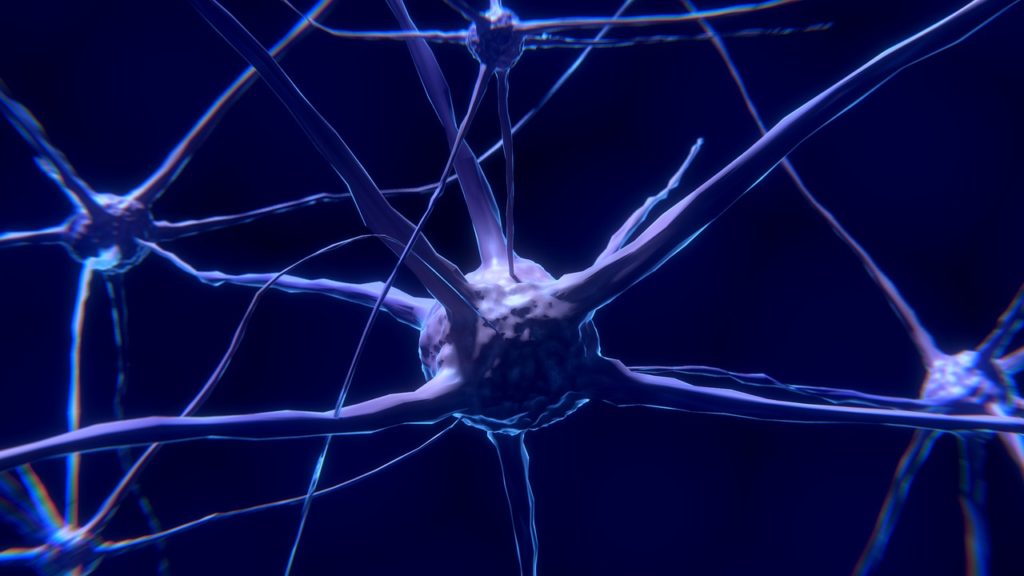A landmark clinical trial was announced recently by researchers at Kyoto University. For the first time in history, this trial tests the use of stem cells for the treatment of a major degenerative brain disease: Parkinson’s disease. The significance of a trial like this should not be understated, as the therapeutic potential of stem cells in diseases such as Parkinson’s disease may have a big payoff. Current treatments for Parkinson’s disease only alleviate symptoms, but cannot cure it.

Neural Stem Cells derived from Induced Pluripotent Stem Cells. Image from Wikimedia Commons
Parkinson’s Disease: What Is It?
A key feature of degenerative brain diseases such as Alzheimer’s disease and Parkinson’s disease is the progressive death of neurons in the brain. Our brains are made of roughly 100 billion neurons, or brain cells. Each type of neuron is classified according to the type of chemical signals that they produce. These chemical signals are known as neurotransmitters, and you may be familiar with some of these already. For example, serotonergic neurons are neurons that produce serotonin, and an imbalance in the brain of this neurotransmitter is famously implicated in depression. Dopaminergic neurons produce dopamine, the neurotransmitter most commonly associated with reward and pleasure. Importantly, these dopaminergic neurons are also involved in controlling body movement. The symptoms of Parkinson’s disease, such as tremors, rigidity, slowed movement, and dementia, occur because these important dopaminergic brain cells die off.
Current Parkinson’s disease treatment is primarily centered around dopamine replacement therapy, where a variety of medications are used to increase the levels of dopamine in the brain. The commonly used Parkinson’s disease medication called levodopa is converted to dopamine in the brain, increasing its levels. Other medications may prevent the natural breakdown of dopamine in the brain, thereby also boosting dopamine levels. Still, while current medications may increase dopamine in the brain and help to manage symptoms, there is no way as of yet to cure, slow, or reverse the progression of Parkinson’s disease. The dopamine neurons will continue dying, and the dopamine neurons that have already died will not come back.
The Promise of Stem Cell Therapy
Stem cells are the first cells of a human being to form, and eventually transform into all of the other types of cells in the body. I wrote in a previous article about the promise of using stem cells to research neurodegenerative disease. With advancements in medicine, scientists are now able to take an adult person’s skin, hair, or other cells, turn them back into stem cells, and then use these stem cells to grow back into cells of any type, including neurons. Stem cells created in this way are known as induced pluripotent stem cells.
Beyond disease research, this technology is also promising for degenerative brain disease treatment. This is because our brains are unique in that they generally do not grow new neurons. With induced pluripotent stem cells, there is now a way to produce new neurons and hopefully use them to replace neurons that have died. Still, the production of therapies using these stem cell types have been challenging to develop, and human trials using induced pluripotent stem cells have been few and far between.
Stem Cell Therapy and Parkinson’s Disease
Regardless, the research continues to progress, and last year a paper reported that the transplantation of human induced pluripotent stem cells into monkey models of Parkinson’s disease was actually successful. This then brings us to the recently announced landmark clinical trial in which the same group of scientists intend to test this stem cell therapy in humans with Parkinson’s disease.
The trial will involve a small group of Parkinson’s disease patients (only 7 patients). Neurosurgeons will drill two small holes into these patients’ skulls, and inject roughly 5 million cells that are beginning to become dopaminergic neurons into the patients’ brains in an area called the putamen. The putamen connects to the area of the brain where dopamine neurons die in Parkinson’s disease. These cells will then turn into dopamine neurons.
If this trial can demonstrate that a procedure such as this can be safe and effective, it will be a boon for Parkinson’s disease treatment. For the first time in humans, there may be a treatment that does not just alleviate the symptoms associated with the disease, but actually replaces cells that have already died. As only the third clinical trial in humans involving induced pluripotent stem cells, and the first involving any neurodegenerative disease, the scientific and medical communities will be watching this trial with much interest.


